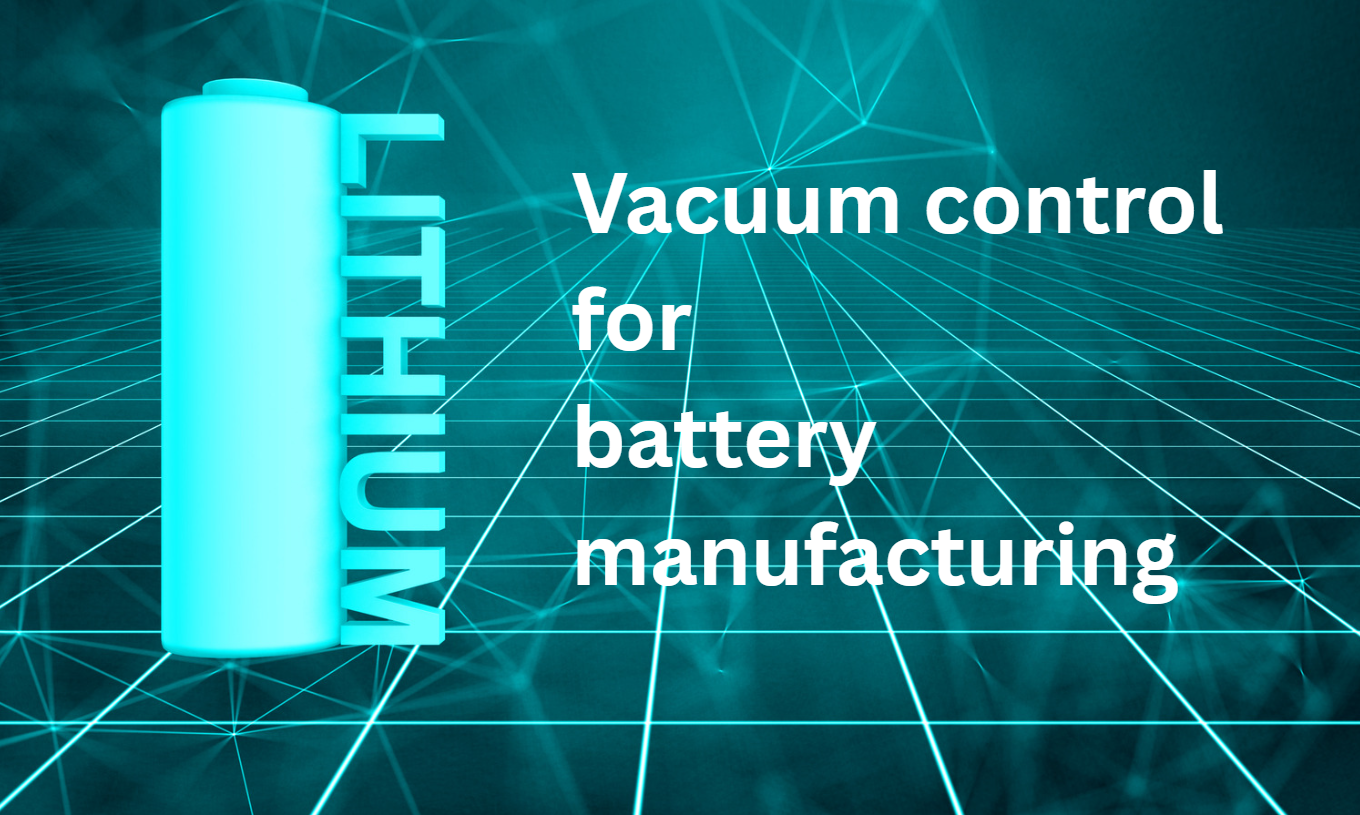Modern devices such as smartphones, laptops, and electric vehicles often use lithium-ion (Li-ion) batteries to store energy. These batteries work by moving lithium ions between two electrodes— one positive and one negative—during charging and recharging cycles to facilitate the storage and release of energy.
Battery manufacturing is a complex process. One of the first steps involved in making Li-ion batteries is manufacturing the electrodes themselves, generally with the use of slurries composed of various chemicals. Subsequent steps include drying the electrodes in an oven; assembling the electrodes in a cell; filling the cells with an electrolyte solution; and finally degassing and sealing them.
Specific challenges of Li-ion battery manufacturing
Vacuum control comes into play during several of these steps; however, due to the complexity of the Li-ion battery manufacturing process, traditional vacuum control options are not always suitable. As a result, engineers and system designers often select alternative methods, including Equilibar’s unique direct-sealing diaphragm valve technology.
Vacuum control challenges occur at multiple steps and include the following:
- Harsh chemistries: Solvents used in the electrode slurry and degassing steps are often corrosive, necessitating the use of valves that can withstand aggressive chemistries. The simple design of Equilibar® EVR vacuum regulators makes them easy to customize to choose optimal materials of construction. PTFE, FKM, and FFKM are standard materials for soft seals in Equilibar vacuum valves, with other materials available upon request. Most Equilibar valves use SS316/SS316L body materials, but the body can also be easily changed to other alloys or even polymers if needed.
- High temperatures: During vacuum drying, the oven may reach temperatures of up to 250 °C. Again, Equilibar valves are customizable and can be constructed for these temperatures, with polyimide diaphragms and Kalrez O-ring options being suitable for up to 327 °C.
- Wide, variable flow range: The amount of flow required during the multiple degassing steps will vary widely. Equilibar vacuum valves have wide operating Cv ranges, with turndown ratios of 10,000:1 possible on all of our valves. This means they can maintain a stable vacuum level across an exceptionally wide range of flows.
- Extreme precision requirements: During the electrolyte degassing step, precise vacuum is required, often with stability of <1 mbar. If too much vacuum is applied, the electrolyte may be pulled out of the cell or splatter. If too little vacuum is applied, bubbles will remain in solution. Equilibar vacuum regulators allow for incredibly precise control across a wide flow range. When coupled with an electronic pilot and closed loop control, accuracy on the order of fractions of a torr is readily achievable.
Equilibar engineers have years of experience working with demanding vacuum control processes, including vacuum control for battery manufacturing, as well as back pressure control and flow control. We encourage you to get in touch with them about your specific fluid control challenge. They look forward to hearing from you!


